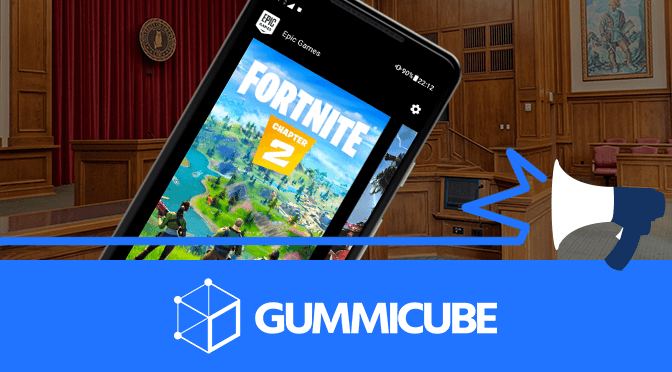Mobile Games Make Apple a Top Gaming Company: Why ASO Matters
June 21st, 2019


by David Bell
CEO at Gummicube, Inc.
When people think of gaming companies, the first names that come to mind are brands like Nintendo or Sony. However, Apple now ranks among them as the fourth largest gaming company in the world. The reason for this is due to the number and quality of games on its App Store, which means that App Store Optimization can play a large role towards success in the gaming industry.
Apple’s Gaming Success
According to AppleInsider, out of the top 35 companies connected with gaming, Apple sits at a respectable #4. The only companies beating it are Tencent, Sony and Microsoft, with Activision Blizzard following up at #5. Apple’s own mobile gaming profits earned $2.09 billion in the first quarter of 2018, and the profits have only been rising since.
Unlike most of its competitors in the top five, Apple’s own gaming profits come from mobile games sold on the App Store, rather than its own properties. In fact, many of the other companies on the list have their own mobile games available on the App Store – their success contributes to Apple’s own success. The success of hit games like Candy Crush and Pokémon Go have contributed significantly to Apple’s own profits, although mobile games of all sizes have a part to play.
In fact, mobile gaming provides the biggest individual segment of profits from the report, contributing to 45% of the global games market. Mobile games for smart phones and tablets have generated $68.5 billion in revenue through a combination of direct purchases, microtransactions and subscriptions.
However, Apple is also making a move on producing and selling its own games through Apple Arcade. This upcoming subscription-based service will provide users with access to a number of titles which they can play across iOS, macOS and tvOS devices. This may provide Apple with a greater profit from a first-party app, although the full impact of Apple Arcade has yet to be seen.
App Store Optimization
With most gaming companies, developers look at their success and go “It must be nice to be a part of that.” With mobile gaming and Apple, however, developers know that they can be a part of that success with their own mobile games. The App Store provides access to a wide audience of users, and Apple’s success in the gaming space is made possible from all the developers that are selling their mobile games on it.
The App Store is a competitive environment, so developers have to optimize their apps to reach and convert users if they want to succeed. Users can search for a wide range of mobile games, including:
Developers should focus their App Store Optimization to target the keywords most relevant to their games and audiences, rather than a generic “mobile games.” For instance, a game like Idle Champions of the Forgotten Realms can target keywords for idle games, “Dungeons & Dragons,” fantasy games, role playing games and so forth. Meanwhile, a game like Super Mario Run would target keywords like “Nintendo,” tap game, running game, platform game, and side scroller. This helps the apps show up in searches that are relevant to their mechanics and themes while remaining distinct from each other within the mobile gaming space.
Creatives are also incredibly important for mobile games. They need to present themselves with videos and screenshots that engage users while showing off the game’s mechanics, features, graphics and so forth. These should give users a good idea of what to expect and make them want to experience it for themselves. Apple’s guidelines require that mobile games only show in-app footage, but since mobile game videos should focus on the gameplay and graphics, this is not an issue.
Additionally, we can see how cross-platform gaming is taking a larger role in the mobile space. Developers are beginning to find ways to make their games available as mobile apps as well as console games, such as through Epic Online Services or with Google Stadia. This provides mobile game developers new opportunities to reach players, but having a strong mobile foundation built with App Store Optimization will give them the foothold they need to build on. Even console game developers are looking to create mobile ports of their games, which means the mobile market is going to grow even more competitive as they fight for users.
Overall
As Apple claims a bigger piece of the gaming market, mobile game developers have more to gain. App Store Optimization grows more essential as there is more profit to be made from the App Store.
Mobile game developers can compete in the App Store by optimizing their apps based around the aspects of their games that appeal to users. Whether it’s the gameplay, thematic elements, or relations to games and properties users know and love, there are plenty of keywords to target and users to reach. Once the app is visible through keyword optimization, strong creative sets can help convert users who see them. With ASO, any mobile game developer can compete with the biggest names in gaming.
Want more information regarding App Store Optimization? Contact Gummicube and we’ll help get your strategy started.
Similar Articles

Posted on August 15th, 2020
Every time a user makes an in-app purchase or buys an app from the App Store or Play Store, Apple or Google takes a portion of the revenue. This App Store Tax has caused complaints for some developers, but with Apple and Google in the middle of antitrust hearings, tensions are continuing to grow.

Posted on August 8th, 2020
Apple has a strict set of App Store Guidelines that developers must follow in order to avoid being removed. Recently, it was announced that the guidelines will prevent developers from selling cloud gaming apps on the App Store. This could have an impact on app marketing, development and App Store Optimization.

Posted on July 7th, 2020
Apple Arcade, the App Store’s subscription game service, provides users with unlimited access to over 100 games for the price of $4.99 a month. Yet Apple can afford to be choosy, as it's cancelling several Arcade game contracts in the company’s effort to maintain subscribers.





